What’s really at stake if you don’t modernize
Modernization today is not a “tech refresh.” It’s a direct lever on competitiveness, cost structure, and resilience, with measurable differences between leaders and laggards.
Competitive urgency
Organizations on the modernization front report upwards of 28% productivity improvements, illustrating the tangible lift in delivery effectiveness.
AI-assisted development further widens the gap: McKinsey and Gartner both report 30–50% faster prototyping when AI is embedded into design and testing workflows, with Google’s enterprise trial showing an average 21% time reduction on complex tasks.
Operational resilience
Monolithic and on-premises platforms make disaster recovery a high-risk, high-cost exercise. Modern architectures (cloud-native, containerized, and distributed) isolate faults, scale elastically, and absorb outages with minimal business impact.
Barclays endured 33 system failures between 2023 and 2025, with outages costing up to £7.5m each.
Cost rebalancing
Legacy maintenance consumes up to 70% of IT budgets in banking and, more broadly, accounts for up to 80% of total IT expenditure, with 40% allocated specifically to technical debt.
Modernization flips that balance, shifting resources toward building value instead of fighting fires.
Security reset
Older codebases often can’t accommodate zero-trust frameworks or cloud-native security controls. They depend on patching and perimeter defenses that don’t hold up against modern threats. Modern platforms embed security by design, aligning with frameworks like GDPR, PCI-DSS, and ISO 27001 from day one.
2025 reality check
Roadmaps are now shaped by factors that didn’t exist a decade ago:
- AI-assisted development and continuous delivery pipelines.
- Composable architectures for rapid assembly of new business capabilities.
- Green IT targets, with cloud-native deployments cutting infrastructure energy use by up to 30%.
The modernization imperative is no longer about “keeping up”; it’s about avoiding the compounding penalties of delay. Every quarter without action entrenches technical debt, inflates costs, and cedes market responsiveness to more agile competitors.
Pre-modernization readiness self-assessment
Before you commit budget, people, and political capital, you need to know if your organization is ready — not just technically, but operationally and culturally. A misaligned start is one of the fastest paths to joining the 75–83% of modernization projects that exceed budget or miss timelines.
Six quick questions to ask before you greenlight funding
- Do we have a complete and accurate asset inventory, including “shadow IT”?
Unknown dependencies are a primary cause of overruns and post-cutover outages. If you haven’t surfaced unofficial SaaS tools, shared drives, or side-scripts, your migration plan is already missing pieces.
- Are business goals and modernization goals identical, or at least fully aligned?
If leadership talks about “innovation” but budgets for “cost containment,” expect scope conflicts mid-project.
- Is there governance maturity: clear decision rights, escalation paths, and success metrics?
Weak governance equals slow decisions, and slow decisions compound schedule slippage.
- Can we cover talent gaps internally or via partners within 90 days?
Skill shortages can stall delivery; in the U.S., demand for cloud-native and refactoring expertise still outstrips supply, leading to premium contractor rates.
- Is our budget modeled for both CAPEX and OPEX, including dual-run overlap?
Running old and new systems in parallel is expensive, but skipping it is riskier.
- Will leadership back both tech change and process change?
New platforms without new ways of working become old platforms fast.
Tools: TOGAF Readiness Assessment + Red/Amber/Green heatmap.
Step 1. Assess and strategize
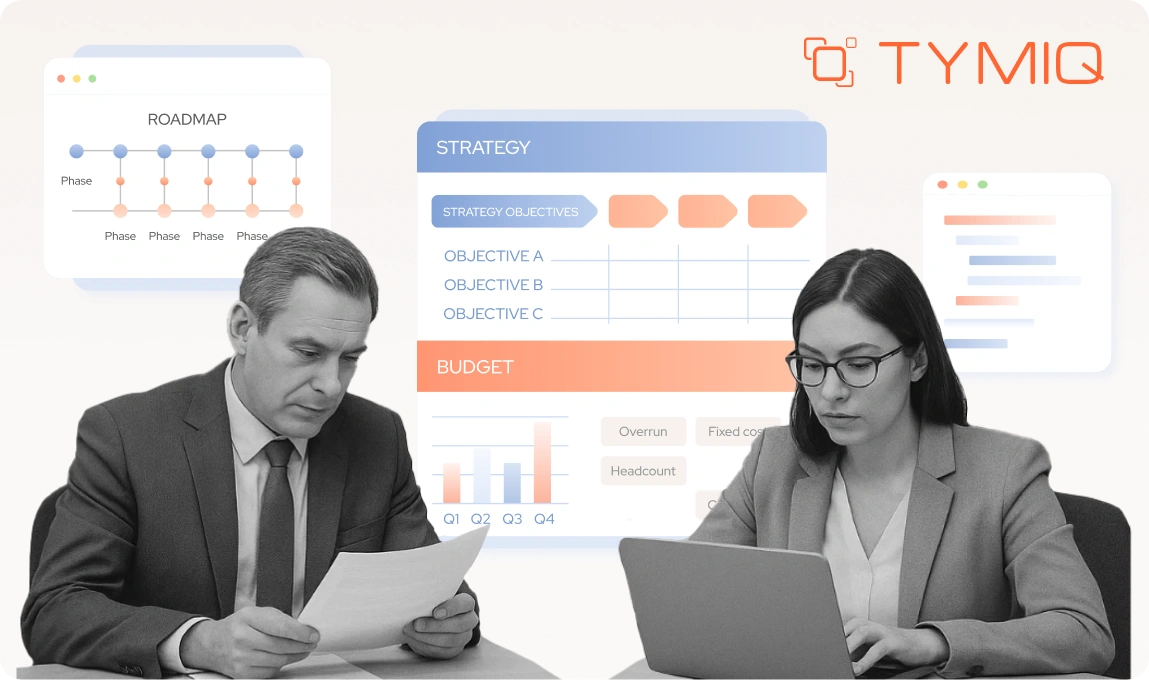
A modernization effort’s trajectory is set in its first 30 days. Miss a single high-impact dependency, and you risk joining the 80% of IT migrations that fail to meet expectations due to budget overruns, missed deadlines, or operational disruption.
Inventory systems
Create a complete application portfolio, including dependencies, integration points, and business value. Use automated discovery tools (e.g., ServiceNow CMDB, dependency mappers) to surface hard-to-find connections and “shadow” systems.
Identify modernization candidates
Score each system on:
- Technical debt: age, maintainability, unsupported tech.
- Business impact: revenue criticality, regulatory exposure.
- Urgency: cost of delay, vendor support end dates.
Target architecture blueprint
Decide early whether your north star is microservices, event-driven, or serverless. Match patterns to business agility needs and operational maturity. A mismatch here drives later rework.
A story hook
A retail bank’s modernization failed not because of bad technology, but because its initial assessment missed a high-revenue service still hardwired to a 20-year-old database. The team discovered it mid-migration, forcing a full rollback and a nine-month delay.
Manager’s checklist
- Has every integration been mapped and validated?
- Are business priorities documented alongside technical scores?
- Do we know which systems are “untouchable” in early waves?
Step 2. Build the right team and governance
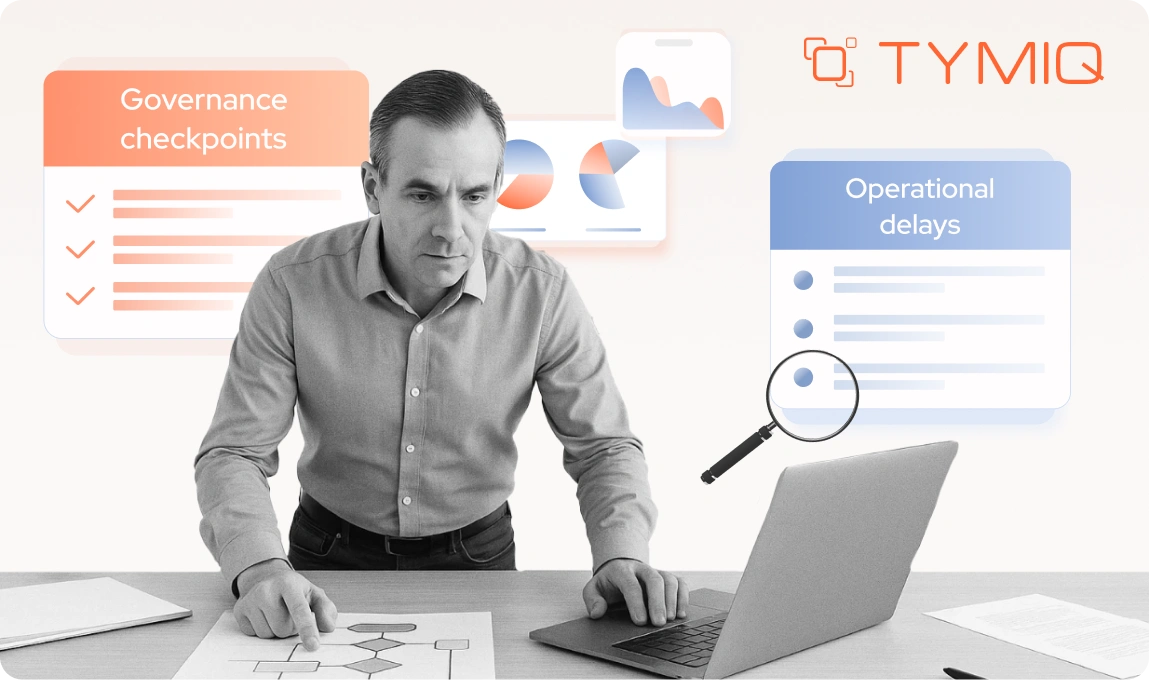
Modernization is not an IT project, it’s an organizational project. The right team mix and governance framework are what keep transformation from collapsing under its own complexity.
Assemble a cross-functional squad
Include:
- Architects set guardrails and ensure alignment with the target architecture.
- Developers and QA execute and validate code changes.
- Operations handle deployment, monitoring, and rollback.
- Product owners keep the work anchored to business outcomes.
McKinsey analysis shows that modernization initiatives with embedded business representatives are 1.5 times more likely to meet both schedule and scope targets compared to tech-only teams.
Set governance early, but keep it light
Establish:
- Architecture guardrails (e.g., naming standards, API contracts).
- A risk register and mitigation owners.
- Compliance checkpoints keyed to regulatory needs.
Contrarian insight
Over-governing in early phases slows momentum and creates bottlenecks before value is visible. Start with the minimum controls to avoid chaos, then layer in formality as the project scales in scope and criticality.
Manager’s checklist
- Is every domain (business, tech, compliance) represented in decision-making?
- Are escalation paths clear and short?
- Is governance proportionate to the project phase and risk?
Cautionary note
One utility company lost a year when its sole modernization vendor went bankrupt mid-project — with all code locked on their servers. Vendor selection and contract structuring (covered in Step 3) is part of governance, not an afterthought.
Step 3. Vendor and contract strategy for modernization
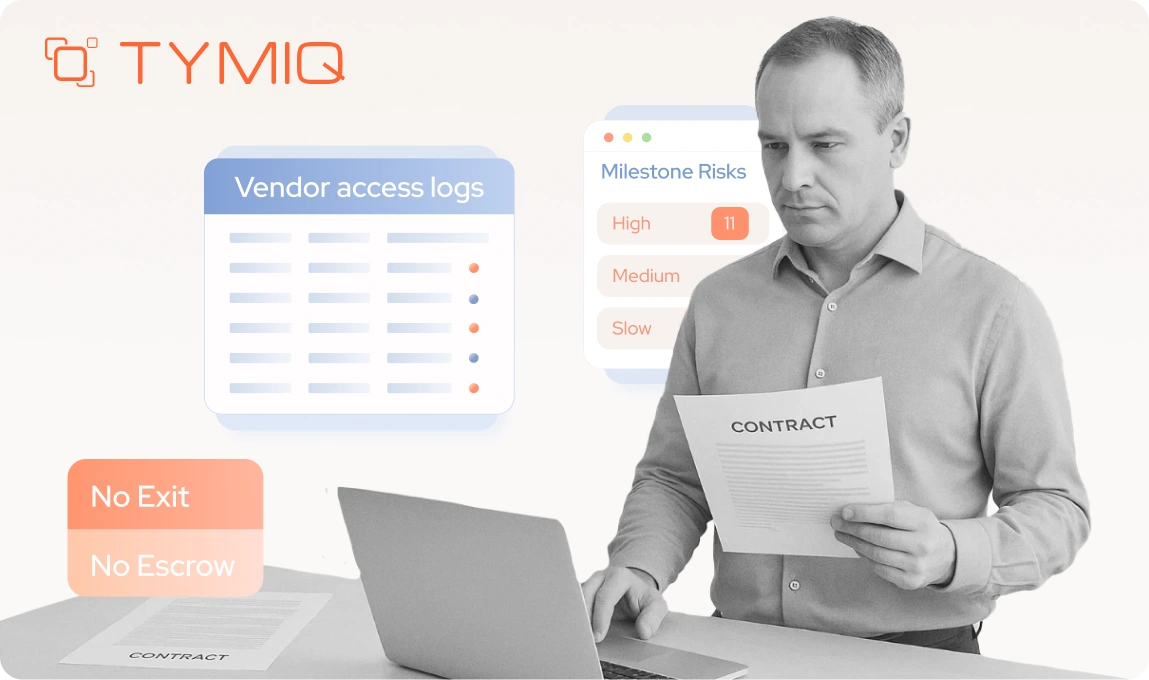
Choosing the wrong vendor (or the wrong contract structure) can derail modernization before the first sprint completes. Over 60% of failed modernization projects cite vendor misalignment or contractual gaps as a root cause.
Selection criteria
- Proven track record in your industry and tech stack.
- Relevant certifications (e.g., ISO 27001, SOC 2) to meet compliance needs.
- Scalability, or the ability to add capacity or expertise without re-contracting.
Contract must-haves
- Milestone-based payments tie cash flow to delivered, tested outcomes.
- Service Level Agreements (SLAs) for both delivery timelines and post-go-live support.
- Exit clauses: clear terms for early termination without penalty creep.
- Intellectual property terms ensure code and documentation are your assets, not theirs.
Engagement mix
- Fixed price for well-defined pilots.
- Time & materials for exploration or R&D.
- Outcome-based for ongoing delivery with clear KPIs.
Risk controls
- Escrow for code and docs ensures continuity if the vendor folds.
- Avoid single-vendor dependence, split high-risk modules or phases between suppliers.
A piece of a story
A utility firm lost a year when its sole modernization vendor went bankrupt mid-project, with all code hosted on the vendor’s servers. The absence of escrow and no exit clause turned a contractual oversight into a 12-month recovery exercise.
Manager’s checklist
- Does the contract protect your access to deliverables at every phase?
- Are payment milestones tied to verifiable outcomes?
- Is there a contingency plan if the vendor underperforms or exits?
Step 4. Pilot and prototype
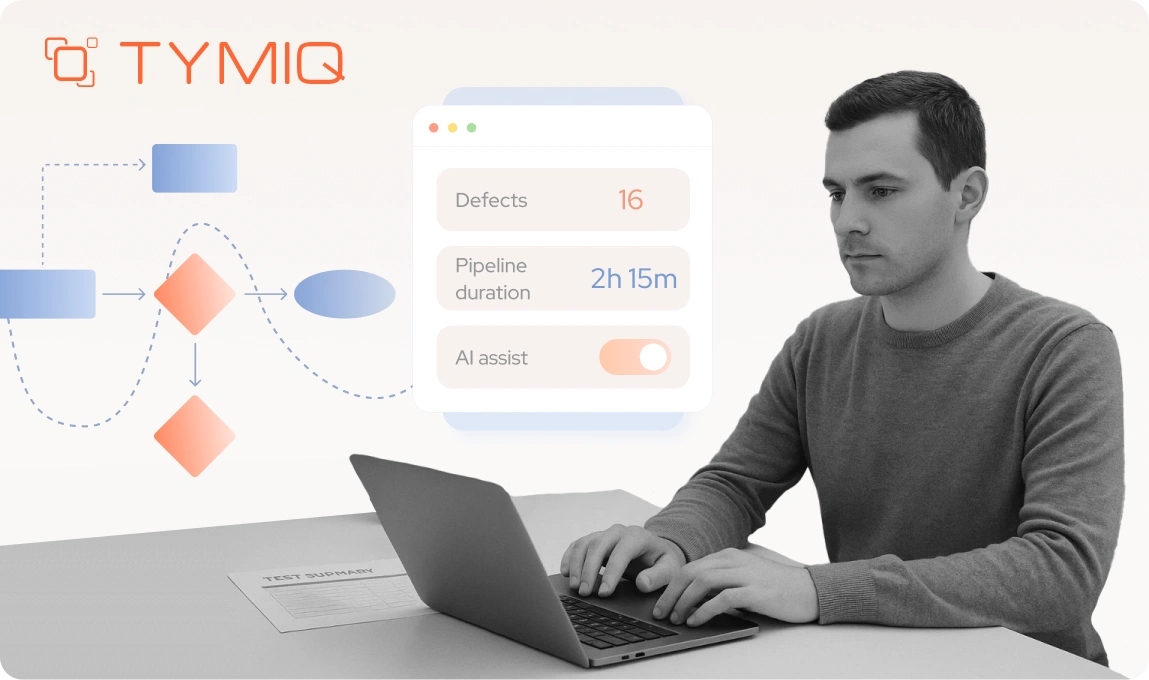
The pilot phase is where you prove (or disprove) your modernization approach before scaling risk and spend. It’s also the best point to inject speed without cutting corners.
Pick a low-risk, high-learning target
Select a module or service that is:
- Non-critical to daily operations.
- Representative of broader technical and integration challenges.
- Capable of delivering visible improvements to win stakeholder confidence.
Stand up the delivery pipeline early
Deploy CI/CD, automated testing, and infrastructure-as-code from day one. This ensures that lessons from the pilot flow directly into scaled delivery without re-engineering the toolchain.
Measure, learn, adjust
Track early KPIs like build time, defect rate, and integration latency against your target architecture goals. Use these metrics to refine processes before committing to the next wave.
2025 trend: AI-assisted acceleration
McKinsey and Gartner report 30–50% faster prototyping when AI tools support design and testing.
Google’s enterprise trial found an average 21% reduction in complex task time, while GitHub
Copilot evaluations show 33–50% gains in coding, debugging, and documentation.
Embedding AI in your pilot lets you set a realistic baseline for how automation can scale in later phases.
Manager’s checklist
- Does the pilot cover technical and operational complexity without risking core revenue?
- Are you using the pilot to test tooling, governance, and vendor performance?
- Is AI enablement part of the scope, or will you retrofit it later at higher cost?
Step 5. Execute incremental migration and refactoring

One-shot rollouts rarely work, especially when legacy systems are revenue-critical. Incremental migration keeps services running, limits rollback scope, and builds stakeholder trust with visible progress.
Strangler Fig Pattern
Wrap new services around the monolith, routing traffic to modern components as they go live. Retire legacy modules in slices, reducing the risk of all-or-nothing transitions.
API-first approach
Expose legacy functionality via stable APIs. This allows new services to consume old logic without deep coupling, enabling parallel development and testing.
Dual-run strategy
Run legacy and modern systems in parallel for a defined period. This provides a safety net for detecting functional mismatches and performance regressions before full switchover.
Risk control insight
Over 50% of failed ERP-to-cloud migrations were disrupted by underestimated integration complexity. Dual-run mitigates this by revealing issues under real load before users are fully cut over.
Manager’s checklist
- Are cutover phases small enough to reverse without impacting core operations?
- Have you budgeted for the cost of parallel environments?
- Is there a clear exit plan for retiring each legacy slice once validated?
Analogy
Think of it as replacing airplane engines mid-flight: you can’t land the plane, but you can swap components one by one while keeping the aircraft aloft.
Step 6. Data modernization
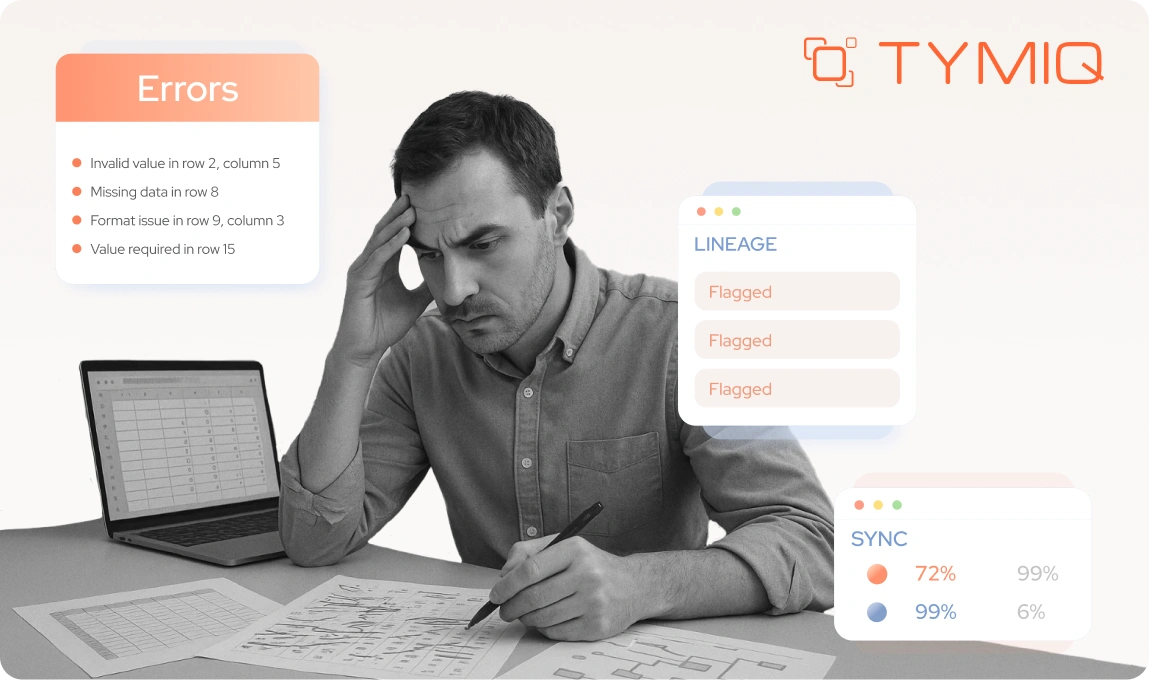
Modernization without addressing data is like replacing the car’s engine while ignoring the fact that the fuel tank is full of sludge. Legacy data architectures slow performance, limit analytics, and carry compliance risks that can’t be “wrapped” with APIs.
Map and classify your data
Identify every source – databases, flat files, third-party feeds – and classify it by sensitivity, retention requirements, and business value. This step is essential for meeting regulations like GDPR or HIPAA and avoiding migration delays from last-minute compliance blocks.
Clean and govern before migrating
Run quality checks to remove duplicates, normalize formats, and tag sensitive records. Poor-quality data replicated into a new system only carries legacy issues forward.
Phase migration using change data capture (CDC)
Move data in waves while keeping legacy and modern stores in sync until final cutover. This reduces downtime and minimizes the risk of loss.
Adopt a modern data stack
Consider a lakehouse architecture, real-time analytics platforms, and governance tools that allow granular access control.
Sustainability bonus
Cloud-native data platforms can reduce infrastructure energy consumption by up to 30%, according to recent industry benchmarks, contributing directly to ESG goals while lowering OPEX.
Manager’s checklist
- Are sensitive datasets clearly tagged and governed before migration?
- Is your CDC pipeline tested under production-like loads?
- Does your target stack support real-time analytics and compliance reporting out of the box?
Step 7. Testing and validation
Skipping rigorous testing is one of the fastest ways to turn a modernization into a rollback exercise. Over 80% of migration failures link back to insufficient testing, missing performance validation, or untested integrations.
Automated regression suites
Cover both legacy and modernized code paths to detect behavioral drift early. Modernization often alters execution order, data handling, or error responses in subtle ways.
Performance and load testing in production-like environments
Synthetic tests alone can be misleading. A fintech rollout passed QA but failed in production because payment gateway latency under real traffic exceeded SLA limits. This factor is usually missed in lab simulations.
Security scans and penetration testing
Refactored code can inadvertently introduce new vulnerabilities. Use SAST (static analysis) and DAST (dynamic testing) alongside pen tests to validate that modernized components meet or exceed security baselines.
Manager’s checklist
- Do automated tests span both functional and non-functional requirements?
- Are load tests run with real data patterns, not just synthetic scripts?
- Has every new service passed a security review before going live?
Practical insight
Testing isn’t a final phase. It’s an ongoing thread through every modernization step. The earlier and more continuously you test, the less likely you’ll need a “big fix” week before launch.
Step 8. Deployment and roll-out
The transition from build to live service is where risk peaks. A well-planned roll-out reduces the blast radius of failure and builds confidence across the organization.
Blue-green deployments
Run two identical production environments (“blue” and “green”). Route traffic to the new environment only after validation, keeping the old one as an immediate fallback.
Canary releases
Release new functionality to a small, controlled subset of users first. Monitor metrics like error rates, performance, user feedback, before scaling to the full audience.
Operational readiness
- Training ensures operations and business teams are prepared to work with the new system before launch day.
- Runbooks document failure scenarios and recovery steps.
- Full-stack observability uses distributed tracing, centralized logging, and metrics dashboards to spot anomalies instantly.
Manager’s checklist
- Is there a clear, tested rollback path for each deployment phase?
- Have support teams rehearsed both success and failure scenarios?
- Are you measuring business impact metrics alongside technical KPIs during roll-out?
Story hook
A SaaS provider used a canary release for a billing engine upgrade, catching a rounding bug that would have overcharged 3% of customers. The fix was deployed in hours, avoiding both revenue loss and PR damage.
Step 9. Continuous improvement
Modernization doesn’t end at go-live. Without a plan for ongoing adaptation, today’s “modern” becomes tomorrow’s legacy.
Create a Modernization Center of Excellence (CoE)
A small, cross-functional unit that owns architecture principles, best practices, and reusable assets. This keeps future modernization waves faster and more consistent.
Quarterly KPI reviews
Measure delivery velocity, incident rates, cost savings, and business outcome metrics. Feed these insights directly into backlog prioritization for the next wave.
Safe-to-fail experiments
Encourage small-scale trials of new tools, services, or architectural patterns without tying them to core revenue systems. Lessons learned become part of the institutional playbook.
Manager’s checklist
- Is there an owner for modernization governance after the initial program?
- Are improvement initiatives linked to measurable outcomes, not just “innovation” for its own sake?
- Do post-implementation reviews result in documented, actionable changes?
Closing thought
The best-managed modernization programs operate like living products: iterating, learning, and evolving. The manager’s role is to ensure momentum doesn’t stall and that each iteration moves the organization closer to its long-term goals.
Managerial best practices
Most modernization guides tell you what to do. Here’s where doing the opposite, or delaying action, can actually save the program.
Delay when culture isn’t ready
If leadership or core teams resist change, modernization will burn budget without results. Focus first on building readiness through smaller, visible wins.
Don’t over-automate too early
Perfecting CI/CD pipelines before requirements stabilize creates sunk costs. Build “good enough” automation for pilots, then refine once patterns are proven.
Pick boring tech for critical systems
Cutting-edge tools can be high-risk when stability is the real goal. Established, well-supported technologies reduce surprises during scaling.
Keep scope ugly but deliverable
An MVP that solves one painful bottleneck earns trust faster than a two-year pursuit of perfection. Incremental credibility beats delayed ambition.
Exploit change windows
Major organizational shifts (leadership changes, mergers, budget resets) are opportunities to push through structural decisions without prolonged resistance.
Lock in quick wins
Deliver something tangible in 60–90 days to keep sponsors engaged and the project top-of-mind. Quick ROI builds political capital for the harder phases.
Manager’s checklist
- Are you timing major changes to moments when the organization is most open to them?
- Do your early deliverables show visible value to both technical and business stakeholders?
- Have you balanced innovation with operational reliability?
Common failure patterns and how to avoid them
Even with the right tech choices, many modernization programs fail because the fundamentals were skipped or rushed. Most of these patterns map directly to earlier steps in this roadmap.
Tech-led with no business anchor
When modernization is framed purely as an IT upgrade, business leaders disengage.
Avoid it by: Aligning modernization goals with top-level business objectives (Step 1. Assess and strategize).
Skipping readiness and vendor vetting
Rushing to start work before checking cultural readiness or vendor stability increases the odds of mid-stream breakdowns.
Avoid it by: Using the readiness self-assessment and risk-based vendor selection (Steps 1–3).
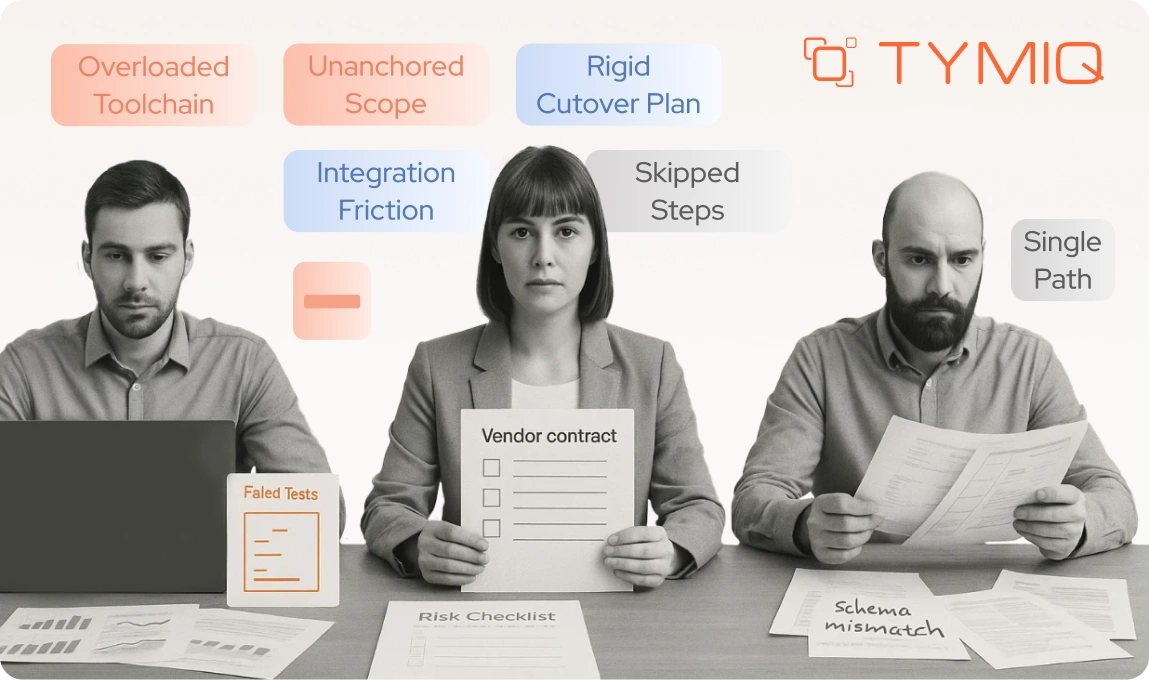
Underestimating data complexity
Migrations stall when data quality, sensitivity, or governance issues surface late in the process.
Avoid it by conducting a dedicated data modernization phase (Step 6).
Tool overload without process change
New platforms deployed on old processes won’t deliver promised gains.
Avoid it by: Embedding process and governance improvements alongside tooling (Steps 2 and 9).
Over-reliance on a single deployment path
One-size-fits-all cutovers lead to avoidable downtime.
Avoid it by using incremental migration, dual-run, and varied deployment strategies (Steps 5 and 8).
Manager’s checklist
- Can each major decision trace back to a business case?
- Are there contingencies for vendor, data, and process risk?
- Is governance evolving as the program scales?
Real-world snapshots: Modernization in action
These aren’t abstract theories. Across industries, modernization has delivered measurable business impact when executed with the right strategy, governance, and technical rigor.
Air traffic control: Parallel migration without downtime
When an ATC technology provider faced an urgent migration from .NET Framework to .NET Core, TYMIQ executed a parallel migration strategy. The legacy system remained fully operational while the modernized version was developed, tested, and deployed. This ensured uninterrupted airport operations while delivering performance boosts, cross-browser compatibility, and compliance with CAP 670 standards.
E-procurement: Cloud migration and cost optimization
Conrad Electronic needed to migrate its 2M+ supplier procurement platform from a third-party host to Google Cloud. TYMIQ not only handled the migration but also re-architected the system into microservices, optimized performance, and reduced infrastructure costs. The platform now supports mobile-ready apps, scales dynamically, and maintains 24/7 availability across 15 European markets.
Logistics: Reengineering under live load
The Port of Eilat's legacy cargo management system suffered from 20-second dashboard delays and browser incompatibility. TYMIQ rebuilt the system architecture while keeping it live, integrating with customs, ship agents, and personnel systems. The result: real-time dashboards, improved data security, and support for complex business logic, all delivered without operational disruption.
Critical incident management: Building for scale and security
Swissphone's critical incident management platform required fault-tolerance, multi-channel communication, and high-load stability. TYMIQ’s modular, microservices-based architecture provided cloud, hybrid, and on-prem deployment options, enabling the platform to maintain uptime during spikes while meeting stringent security requirements.
IoT asset monitoring: From concept to market in a year
Prylada's vision of a modular, end-to-end monitoring solution went from design to commercial release in just 12 months. TYMIQ delivered a hardware–software ecosystem with OTA firmware updates, low-power devices, and multiple connectivity options (NB-IoT, LTE, RF), helping the client secure a strong market position.
Pattern across cases
The projects shared three success factors: maintaining operational continuity, aligning modernization scope to business needs, and embedding scalability from day one.
When doing nothing becomes riskier than change
There’s a tipping point where “wait and see” quietly turns into “too late to catch up.” In TYMIQ’s real-world projects, that moment often arrived earlier than leadership expected.
Maintenance creep eats budgets
If your legacy system’s annual upkeep exceeds 15% of its replacement cost, as seen in several TYMIQ cases, modernization is no longer a discretionary expense. It’s a financial drag.
Vendor timelines don’t align with yours
Copperchase’s urgent migration was triggered when framework support deadlines collided with operational mandates. If your tech stack’s end-of-support date is less than 12 months away, you’re already in the danger zone.
Talent windows are closing
In the Port of Eilat project, browser compatibility and outdated architectures were stalling recruitment. When the only people who can maintain your system are nearing retirement or charging premium “legacy rates,” the clock is ticking.
Customer expectations leap ahead
Conrad’s re-architecture wasn’t just about cost savings. It was about matching the UX speed and availability that B2B buyers were starting to expect. Delay here risks market share loss you can’t claw back.
Risk score reality check
- 0–3: Low – monitor and plan.
- 4–6: Urgent – start modernization within the next fiscal cycle.
The lesson:
If more than one of these triggers is flashing red, inaction is the higher-risk move.
Conclusion: The manager as the conductor
Successful modernization isn’t a matter of picking the right framework or cloud provider; it’s the art of orchestrating people, processes, and technology in sync. Like a conductor, you keep each section moving at the right pace, cue the critical entrances, and ensure the final delivery lands on time and in harmony.
The readiness self-assessment you started with becomes your score sheet. Vendor strategy sets the tempo, incremental execution keeps the rhythm steady, and continuous improvement ensures the piece never stagnates.
From TYMIQ’s case history, the most successful managers share three habits:
- They treat modernization as a capability, not a project. Each wave builds on the last, preventing “re-legacy” from setting in.
- They tie every decision back to business value. Whether it’s Copperchase avoiding downtime or Conrad unlocking new scalability, the “why” stays clear.
- They build trust through visible progress. Quick wins sustain sponsorship and keep teams aligned through the tougher phases.
The real measure of success is not just a modern tech stack. It’s an organization that can adapt faster, recover quicker, and innovate continuously.











.svg)

